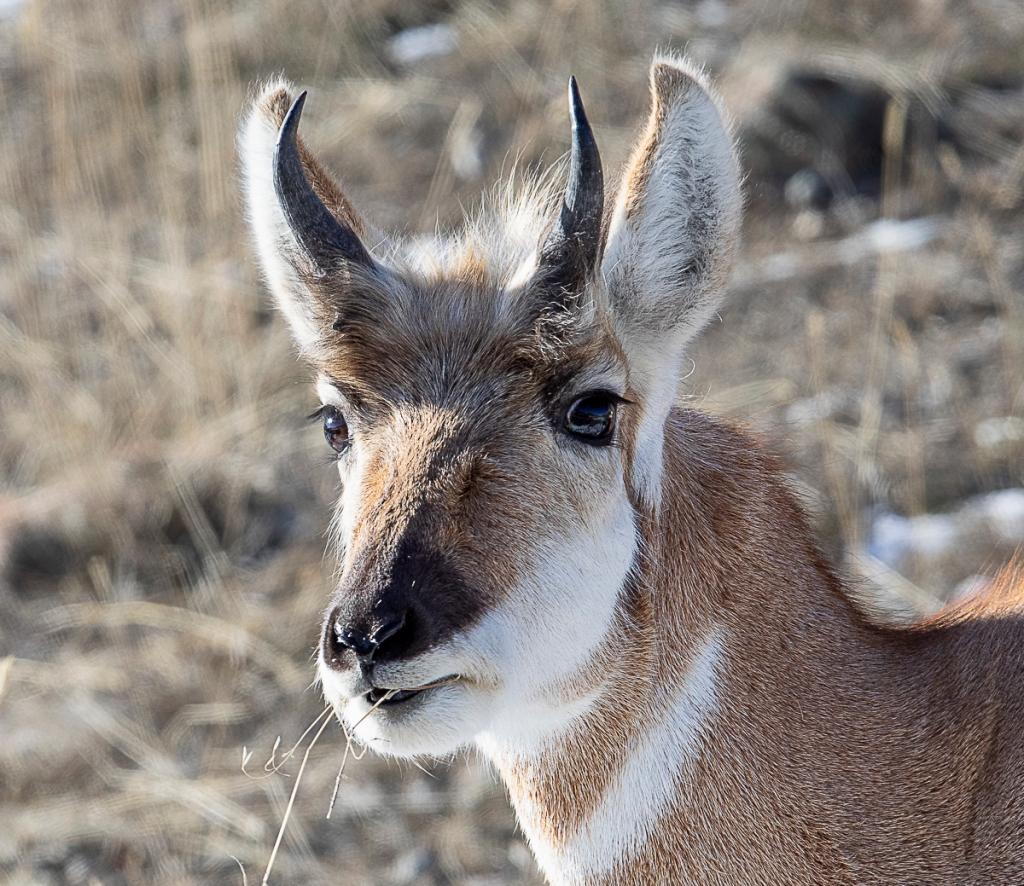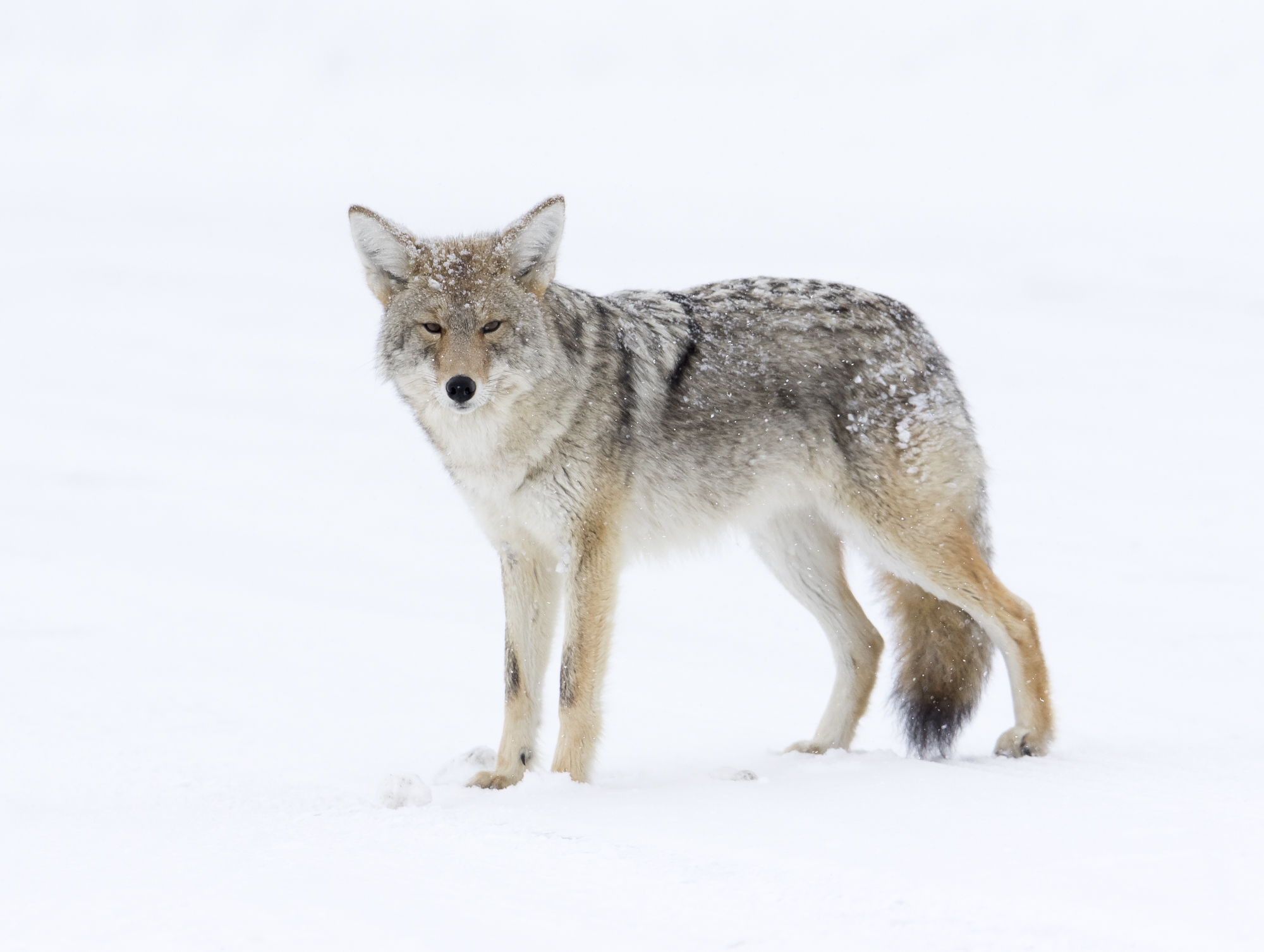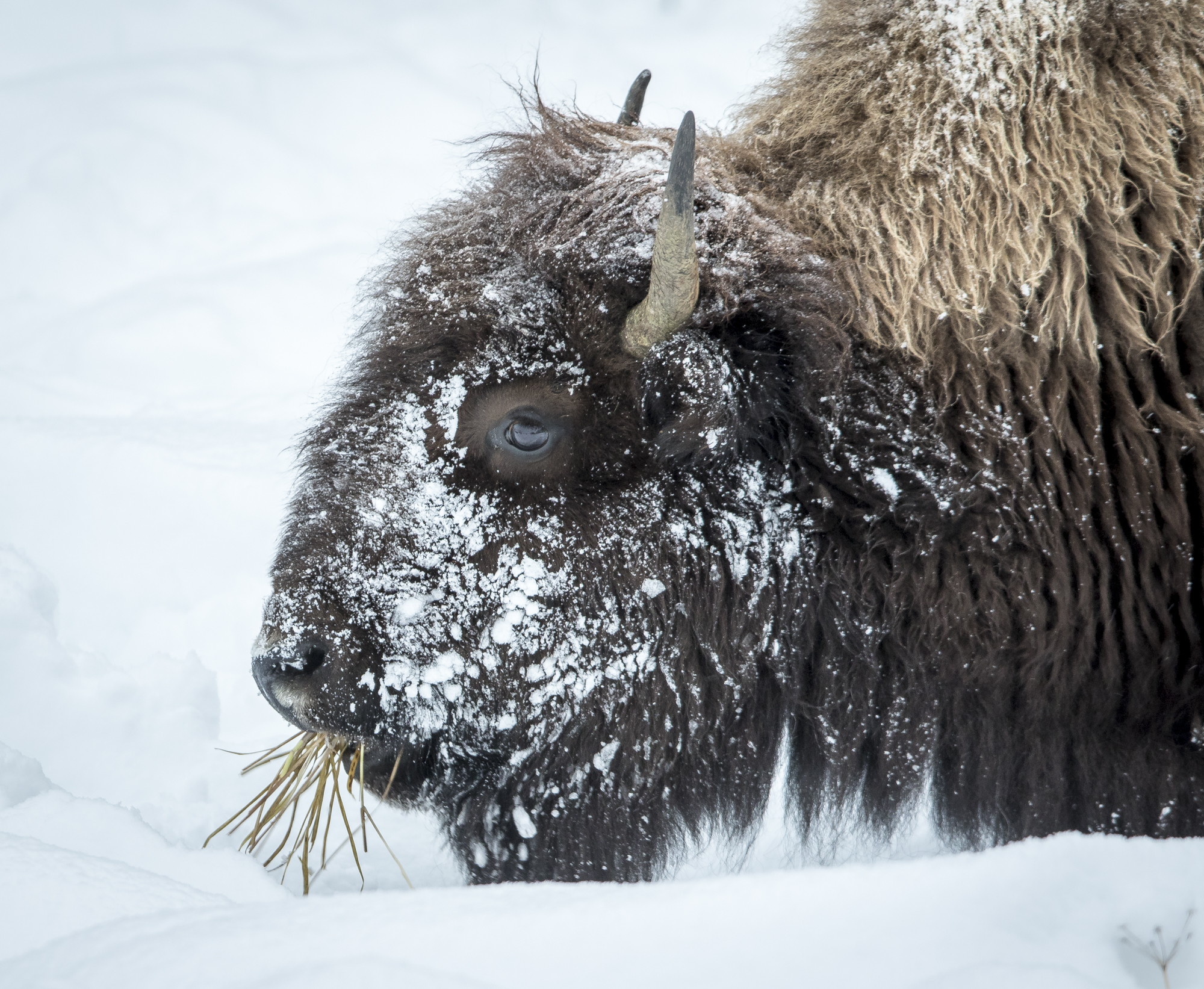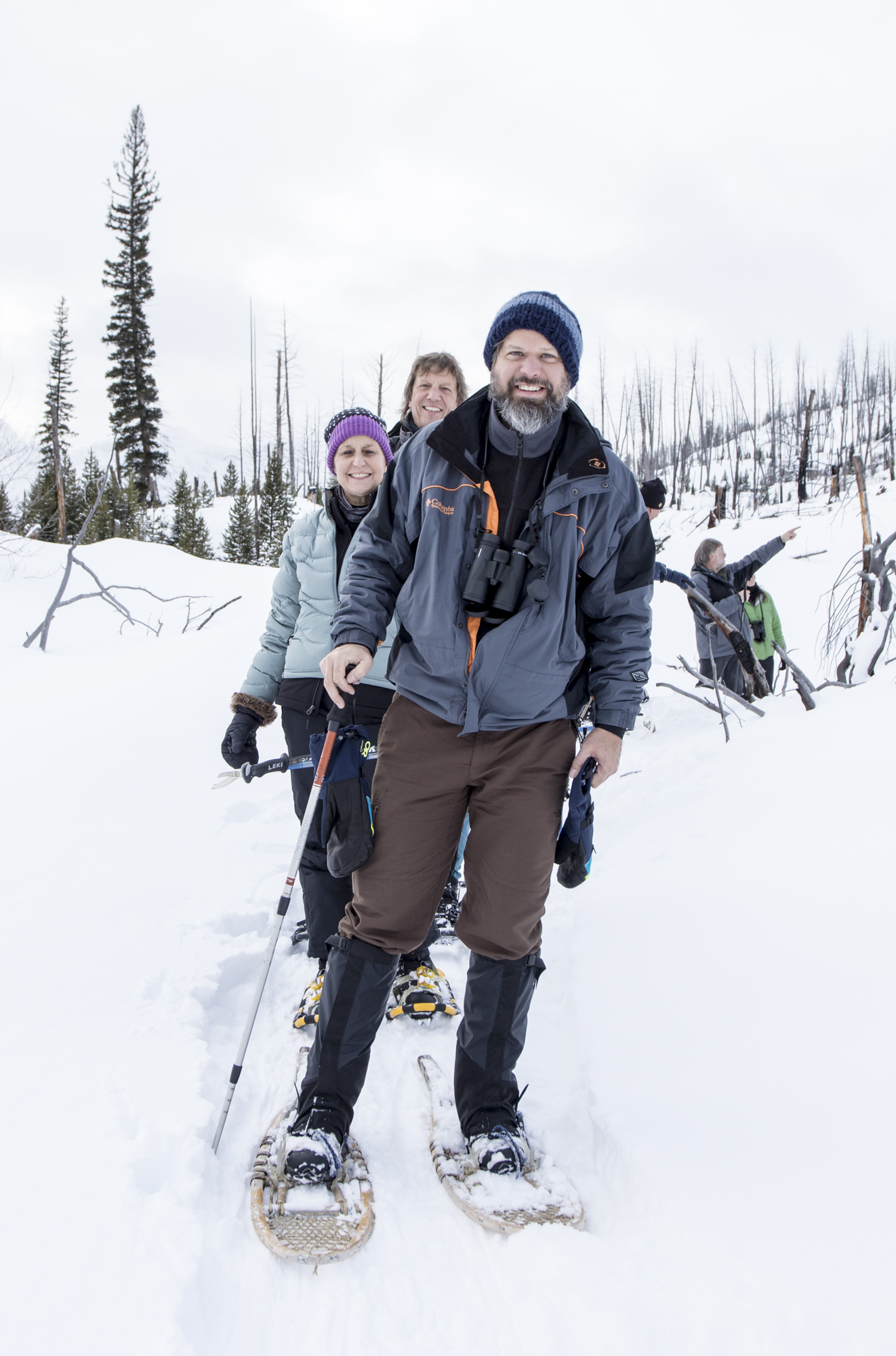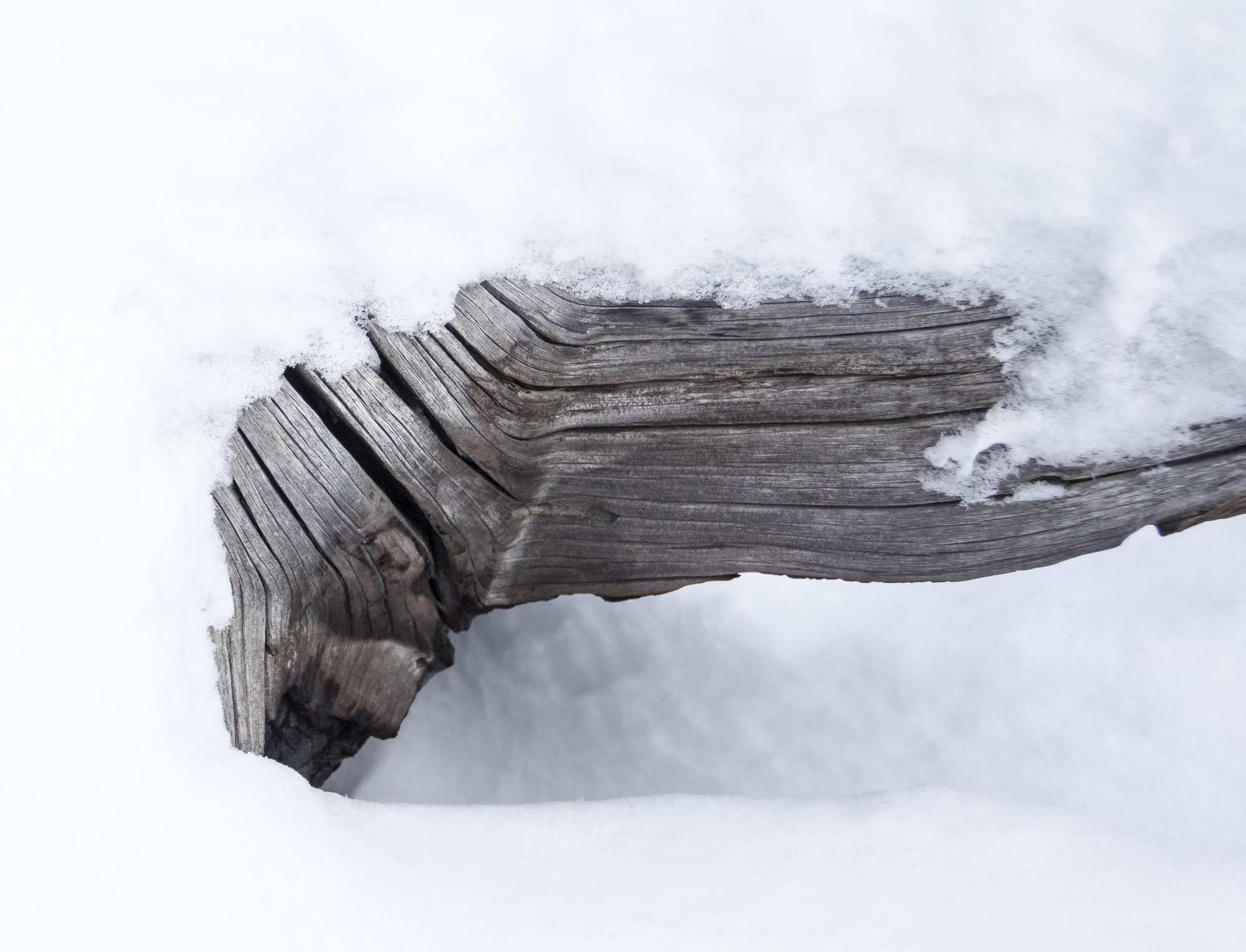To appreciate the beauty of a snowflake it is necessary to stand in the cold.
~Aristotle
This is the second post from our January trip to Yellowstone. After spending a few days scouting the northern range of the park and hanging out with some Montana friends, a group of eight NC friends flew out to Bozeman for the start of a winter adventure. We picked everyone up in our two 4wd rentals and were off to the park and our wonderful lodging at Elk River Art in Gardiner.

The dining room and living space at Elk River Art lodge. The place is spectacular and overlooks the Yellowstone River (click photos to enlarge)
After settling in, we drove the Old Yellowstone Trail to see the hundreds of ungulates gathered in the lower elevation sagebrush and grassland flats along the river.

A Rocky Mountain Bighorn Sheep ram that has seen some battles over the years. This guy had the most banged up set of horns I have seen on a ram in the park, the result of many head butts with rivals during the rut.
The next morning we headed into the park early, with temperatures below 10°F (I believe the coldest we experienced with our friends was -13°F and the highest up near 20°F). Though snow was predicted, we were thrilled to have some sunshine on our first full day in the park.

Barronette Peak in all its winter glory

Bighorn ram on the cliff above the road at the Confluence (where Soda Butte Creek flows into the Lamar River)

Our first snowshoe hike was at the place Melissa and I had encountered the two bull Moose a few days before. No Moose this time, but the scenery (and tracks of so many animals) was amazing

Everyone doing great on snowshoes (those in the know say if you can walk, you can snowshoe)
The day proved to be a wildlife bonanza with lots of Elk, snowy Bison, and a threesome of River Otter fishing below the Lamar River bridge in Little America, where a crowd had gathered to enjoy the antics.

Two of the three otters popped up on the ice for a photo

The otters were very adept at catching small fish and making quick snacks of them

A gorgeous Coyote paused to check us out as it traveled toward the road in Little America
The next day brought snowy conditions and more wildlife sightings, including what for many was the highlight of the trip. We were hoping for wolves and went up to the Nature Trail parking lot where Melissa and I had seen some of the Rescue Creek pack a few day earlier, but no luck. We then saw some cars stopped near Blacktail Creek, and rumors were that wolves had been heard. We drove down to the pullout at Wraith Falls on a hunch that Melissa had and as we pulled in, the one person there motioned for us to be quiet and listen…howling! And it was close!

The six wolves of the Lupine Pack on a ridge across from Wraith Falls
We stayed with these wolves for a couple of hours, watching them interact and howl, probably the best howling I have ever heard. The pullout is small so we were with a relatively small group of wolf-watchers. Rick McIntyre (the “wolf guy”) stopped in and Melissa went over and got the scoop on who was who in the pack. It was wolf watching at its finest.

Heavily cropped image of four of the Lupine Pack running across the hillside
I put my phone on a spotting scope and was able to get a few images and some video of the wolves howling…
After some quality time with the wolves, we headed toward Silver Gate at the northeast entrance for a talk with our friends Dan and Cindy Hartman. Dan shared some of his amazing stories and films of local wildlife, focusing on the incredible diversity found in the nearby Beartooth Mountains. On our way, Melissa spotted a Red Fox near a group of bison, so we parked and got out hoping for a better look. It went in and out of view along a ravine edge and briefly appeared in the open for a photo.

Red Fox on the Blacktail Plateau
After spending some time in Silver Gate, we headed back toward Gardiner with a steady snow falling.

Barronette Peak has a different look during a snow event
These conditions make you realize what a bottleneck the winter is for all the wildlife in the park – they must all find ways to persevere through these difficult months.

This Coyote has a leg injury and has been nicknamed Limpy on social media from photographers in the park. It is probably becoming acclimated to humans and may, unfortunately, be begging for food from passing vehicles as it patrols the road.
We were pleased that our friends seemed to enjoy watching bison as much as we do, so we spent time every chance we had to just sit and watch these amazing animals as they plowed their heads through the snow seeking the buried grasses.

A Bison near Soda Butte wading through snow up to its belly

Bison use muscles from that huge hump to their necks to swing their massive heads back and forth through snow to get food underneath

A lot of effort for a meager mouthful of dried grass
We did another snowshoe hike at Junction Butte where the Yellowstone and Lamar Rivers meet. Our trail had fresh Coyote and Bighorn Sheep tracks leading the way. Toward the end of the trail it looked as though the sheep had bounded away through the snow, perhaps as we approached.

The Yellowstone River at Junction Butte
On our last day of driving the northern range (the only road kept open for regular vehicles in winter in the park), we saw a crowd of tripods and big lenses pointed to a ridge line near the road. I had to pause because of stopped cars and managed a couple of photos of what was causing the traffic jam – two magnificent bull Elk had bedded down not far from the road were silhouetted against the gray sky.

One of two nice bulls bedded down just above the road
The next day was our trip to the interior on a snowcoach, always a highlight of any winter trip.

Standing in Hayden Valley with our transportation to the interior, a Xanterra-operated snowcoach

A common sight in winter – Bison using the road for easy travel, requiring your car or a snowcoach to pause and let them pass

The task of the winterkeepers in the interior is to cut huge blocks of snow and push them off the roofs of buildings to prevent collapse under the weight of the several feet of snow that falls each winter. At Canyon, we saw a work in progress – note the clean edge of the cut snow on the roof and the huge pile of snow blocks tn front of the building.

The so-called “Murphy tree” (I assume named for renowned Yellowstone photographer, Tom Murphy) stands against a sea of white in Hayden Valley

We all were awestruck by the delicate beauty of snowflakes falling on our jackets and gloves

Tons of delicate crystals add up to impressive snow depths (and she is tall!)
Along the rivers we saw several species of birds including Bald Eagles, American Dippers, Buffleheads, Mallards, Ring-Necked Ducks, Hooded Mergansers, Canada Geese, and the elegant Trumpeter Swans.

A pair of Hooded Mergansers photographed through the snowcoach window

Trumpeter Swan along the Firehole River

The groomer is what keeps the interior roads passable for snowcoaches, snowmobiles, and even Bison. Behind and to the right of it is the Visitor Center at Old Faithful and to the left is the historic Old Faithful Inn (which is closed in the winter)
Our time in the interior was filled with cold temperatures, fresh snow, wildlife, and the incredible thermal features for which our first national park was established back in 1872. I enjoy the thermal basins more in winter because the crowds are non-existent, and you can hear the features hissing, splashing, and plopping amidst the increased steam.
A ranger once told our group that no matter what you came to see in Yellowstone, you really came to see geology (since it determines everything else we see on the landscape). I think people may come to Yellowstone for many reasons. The fantastical thermal features, the amazing abundance and diversity of wildlife, and the simplicity, beauty, and quiet of a snowy scene are some of the many wonders we all shared and came to appreciate in this magical place called Yellowstone. I can’t wait to return…
— A snowy scene from the interior of our favorite park, Yellowstone


